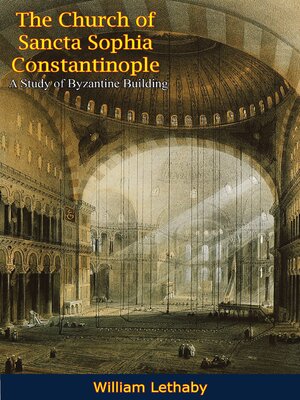
Sign up to save your library
With an OverDrive account, you can save your favorite libraries for at-a-glance information about availability. Find out more about OverDrive accounts.
Find this title in Libby, the library reading app by OverDrive.



Search for a digital library with this title
Title found at these libraries:
| Library Name | Distance |
|---|---|
| Loading... |
Sancta Sophia is the most interesting building on the world's surface. Like Karnak in Egypt, or the Athenian Parthenon, it is one of the four great pinnacles of architecture, but unlike them this is no ruin, nor does it belong to a past world of constructive ideas although it precedes by seven hundred years the fourth culmination of the building art in Chartres, Amiens, or Bourges, and thus must ever stand as the supreme monument of the Christian cycle. Far from being a ruin, the church is one of the best preserved of so ancient monuments, and in regard to its treatment by the Turks we can only be grateful that S. Sophia has not been situated in the more learned cities of Europe, such as Rome, Aachen, or Oxford, during "the period of revived interest in ecclesiastical antiquities." Our first object has been to attempt some disentanglement of the history of the Church and an analysis of its design and construction; on the one hand, we have been led a step or two into the labyrinth of Constantinopolitan topography, on the other, we have thought that the great Church offers the best point of view for the observation of the Byzantine theory of building. William Richard Lethaby (18 January 1857–17 July 1931) was an English architect and architectural historian whose ideas were highly influential on the late Arts and Crafts and early Modern movements in architecture, and in the fields of conservation and art education.







